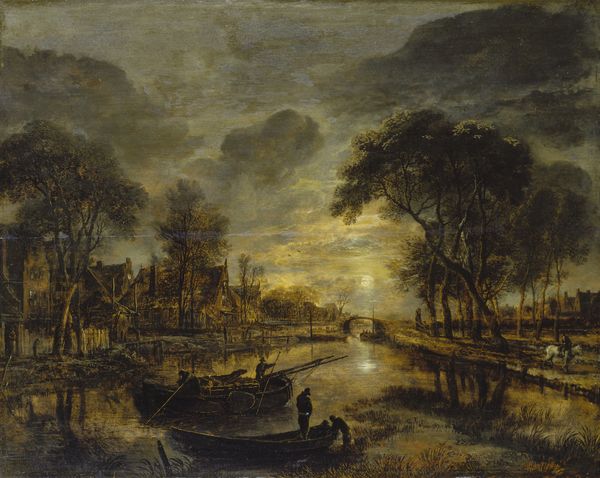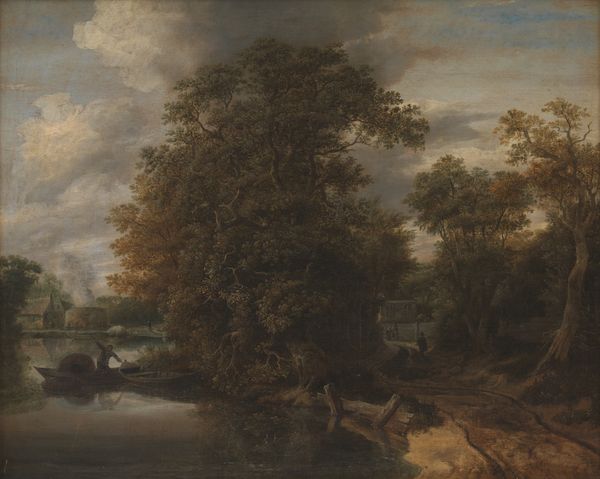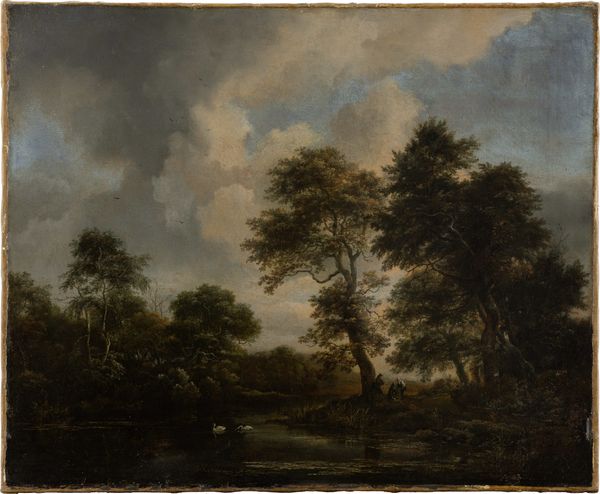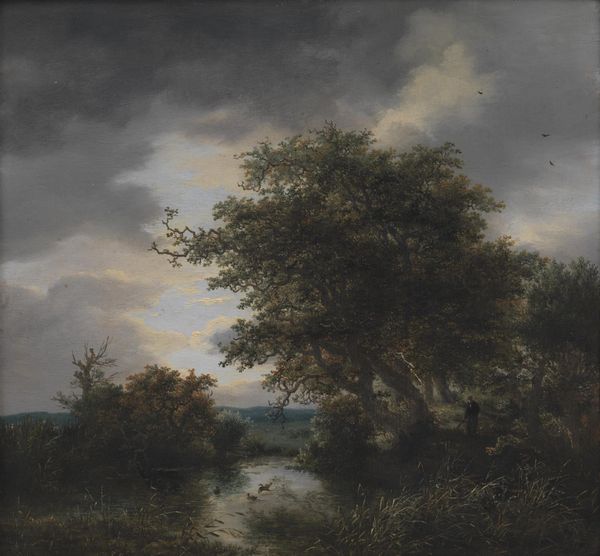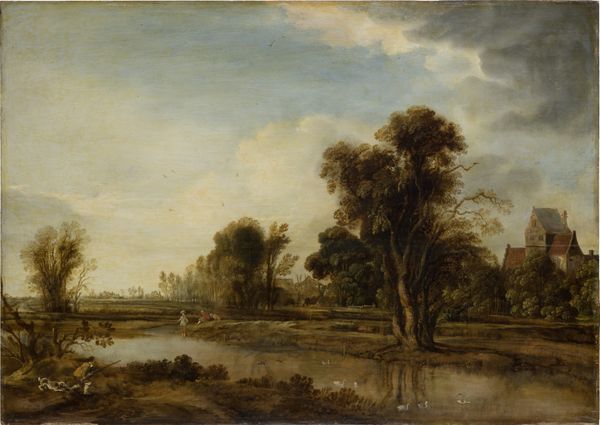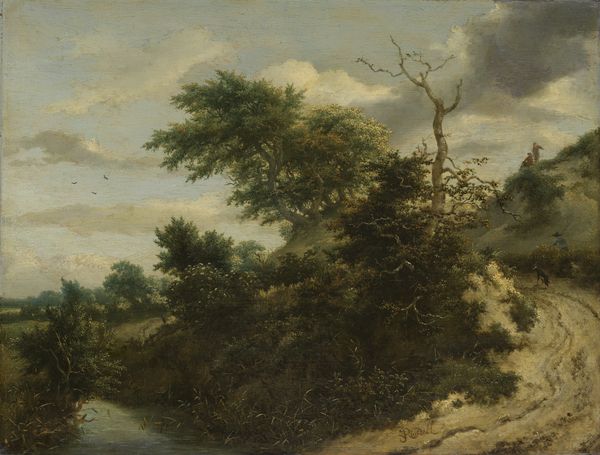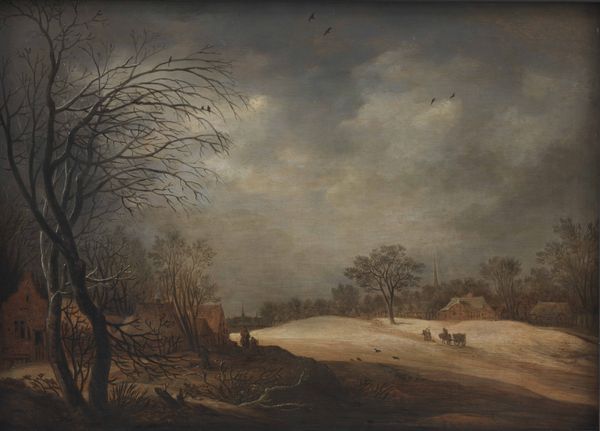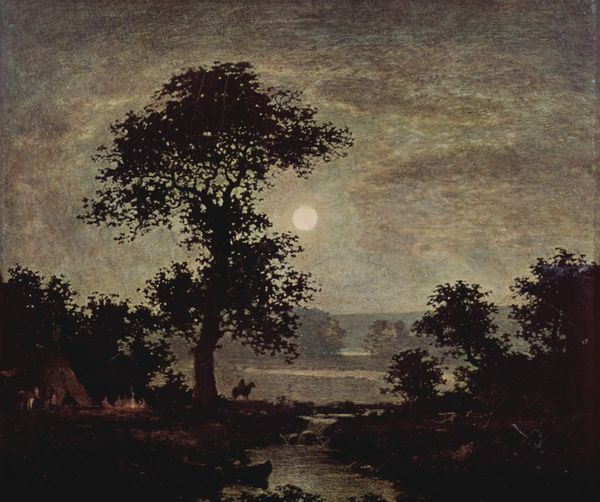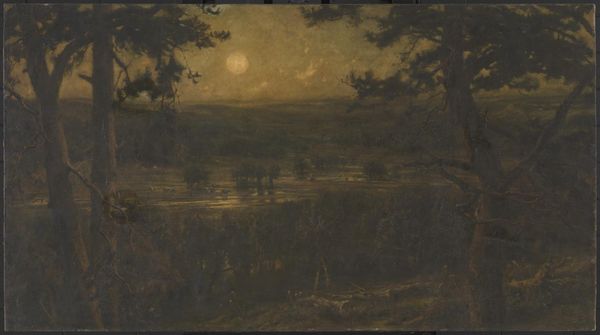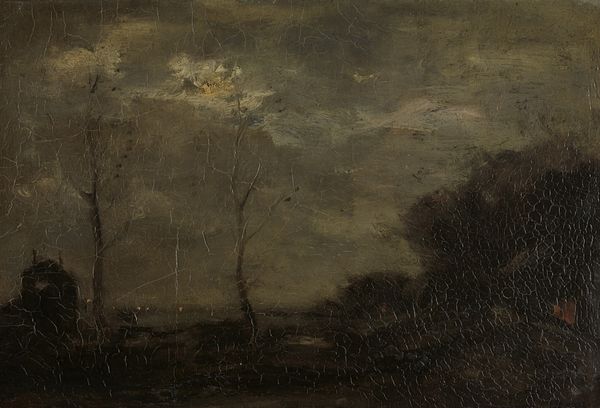
Dimensions: overall: 78.4 x 110.2 cm (30 7/8 x 43 3/8 in.) framed: 101.6 × 132.7 × 6.4 cm (40 × 52 1/4 × 2 1/2 in.)
Copyright: National Gallery of Art: CC0 1.0
Curator: This is Aert van der Neer’s "Moonlit Landscape with Bridge," created around 1648 to 1650 using oil paint. It is an exquisite example of Dutch Golden Age painting. Editor: It's mesmerizing. The cool, shadowy tones, pierced by the moon's glow... it evokes a sense of hushed anticipation, doesn't it? Almost cinematic. Curator: Van der Neer was a master of nocturnal scenes. Think about the socio-economic context: the burgeoning Dutch Republic, its merchant class displaying their wealth and sophistication, demanding sophisticated art to reflect their sensibilities. This landscape offered a tranquil vision, order emerging from darkness. Editor: Yes, the moon – a powerful, ancient symbol – takes center stage. It's fascinating how the moonlight reflecting in the water echoes, a perfect mirroring effect, speaking to dualities. Are we looking at serenity or something slightly more ominous, more surreal, as moonlight often implies? Curator: Well, Dutch landscape painting in this period wasn't merely about picturesque scenery; it served to represent Dutch identity, a collective pride in the land they’d reclaimed. There's often a quiet assertiveness. And here, while there are these wonderful details of people along the path, that light almost completely dominates. The figures seem to represent everyday individuals caught between these symbolic ideas of the painting: earth and heaven, light and darkness. Editor: Consider the color palette: mainly monochrome, which focuses the audience's eyes directly to that beaming, luminous orb. It connects to a long, cross-cultural tradition of moon goddesses. Is this a purely aesthetic exercise, or does it subtly gesture towards feminine power, lunar cycles governing tides and emotions? Curator: Possibly. Remember though, the Dutch Republic, while advanced in many ways, still had strict social structures. These images provided comfort and order during tumultuous social changes. It's an interesting juxtaposition of social restrictions and artistic innovation happening at the same time. Editor: This certainly pushes us beyond mere aesthetic appreciation; the piece urges contemplation on time, transformation, and humanity’s place within the larger universe. Curator: Indeed. Van der Neer's skillful play with light and shadow offers more than just a visual delight, and a sense of how art becomes intertwined with national identity and cultural shifts.
Comments
No comments
Be the first to comment and join the conversation on the ultimate creative platform.
